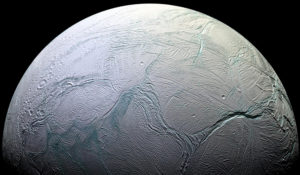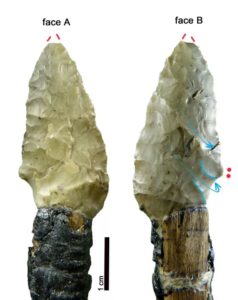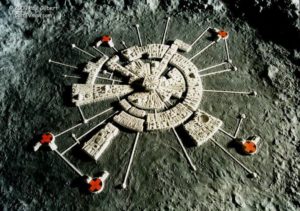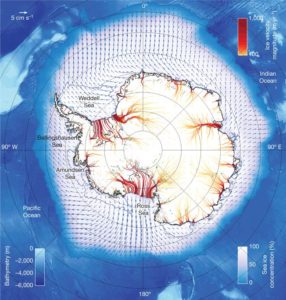Jun
29
2018
 Do we have real free will, and perhaps more importantly, what are the moral implications of belief in free will? These are interesting questions that are sure to prompt vigorous debate when they come up.
Do we have real free will, and perhaps more importantly, what are the moral implications of belief in free will? These are interesting questions that are sure to prompt vigorous debate when they come up.
I have discussed the first question before, in which I take (shocker) a neuroscientific approach. From everything we know about brain function, our experience of our own existence, including what we perceive and the apparent choices we make, are largely a constructed illusion. Many times we feel as if we are making a conscious choice, but we can see in the brain that the choice was actually made subconsciously before we are even aware of it.
Even when the choice is made consciously, meaning we are aware of the factors that are affecting the decision, that does not mean we have truly free will. The brain is still a machine, and is dependent upon the laws of physics. A stone does not have free will to choose its path as it rolls down a hill. Its path is entirely determined by physics. Some argue that brain processes are no different, just orders of magnitude more complex.
Continue Reading »
Jun
28
2018
 Enceladus is one of the most interesting worlds in our solar system. It is a moon of Saturn with a surface comprised entirely of bright ice. Why is the ice so reflective? Because it is constantly replenished from a subsurface ocean of salt water, which gushes through cracks in the surface as geysers.
Enceladus is one of the most interesting worlds in our solar system. It is a moon of Saturn with a surface comprised entirely of bright ice. Why is the ice so reflective? Because it is constantly replenished from a subsurface ocean of salt water, which gushes through cracks in the surface as geysers.
That is intriguing enough, but the implications are even more interesting – most significantly, there is liquid water beneath the frozen surface of Enceladus. Liquid water means a couple of things. First, it means the core of Enceladus is warm. The moon is not frozen solid through. A moon that size should have frozen solid by now, so there must be some source of energy keeping it warm.
The first thought was that tidal forces from Saturn were responsible, but scientists could not make computer models fit. However, a 2017 paper hypothesized that the core of Enceladus may be porous, and this model works. The core flexes, grinding rocks together, creating heat through friction. Further, liquid water would seep into the porous rock, heat to near boiling (90 C) and then rise to the surface and gush out through cracks. Heating would be greatest at the poles, and this is therefore also where the ice is thinnest. The model fits our observations.
Continue Reading »
Jun
26
2018
 There is a seemingly endless debate about whether or not, and how, male and female brains differ. This is also an extension of the also endless nature vs nurture debate.
There is a seemingly endless debate about whether or not, and how, male and female brains differ. This is also an extension of the also endless nature vs nurture debate.
Unfortunately these questions get tied up with social, political, and ideological questions. I say unfortunately because they really shouldn’t be. Ideally we can ethically recognize that the optimal position is to respect every human’s rights and dignity. Everyone should be afforded the same basic rights and opportunity to pursue their potential and desires.
This ethical position can be valid even if it turns out to be true that not every human being is identical in terms of their potential or inclinations, or whether or not there are identifiable subgroups of people. These are scientific questions that should be approached and answered scientifically.
Continue Reading »
Jun
25
2018
 I just finished reading, Energy: A Human History by Richard Rhodes. It’s a fascinating book, and I highly recommend it. Rhodes reviews the history of our use of energy from around 1500 to the present, it is well-researched and contains a wealth of historical information.
I just finished reading, Energy: A Human History by Richard Rhodes. It’s a fascinating book, and I highly recommend it. Rhodes reviews the history of our use of energy from around 1500 to the present, it is well-researched and contains a wealth of historical information.
I love reading popularized science, but the challenge is finding books that are in the sweet-spot of technical detail. As a science communicator, it is often difficult to know how deep to get on any topic. Compared to the knowledge of a non-expert, there is a vast depth of complex, technical, and nuanced knowledge about most scientific topics. The trick is to know your audience and to have a sense of how far down that well of technical detail and complexity to go, while remaining correct as far as you go.
This is a personal choice, but I thought Rhodes did a perfect job on this score. The level of detail was enough to get a rich sense of the topic, and to be a little challenging, but not so much that it slowed down the narrative or overwhelmed you with details you would not remember anyway.
A few themes stuck out for me in the book. One was how similar the social, political, and market forces are today and in the past when it comes to energy. I guess this should be obvious, but my surprise reflects what I think is hindsight bias. We look back now at history with the unconscious bias that it was inevitable, at least in its broad strokes. This is perhaps especially true of science and technology, because they are framed and understood as “advancing” in an objective direction.
Don’t get me wrong, I think science and technology do advance. But there are many twists and turns along the way, and the path that we happened to take was not inevitable, even though it may seem that way now.
Continue Reading »
Jun
21
2018
 In 1991 the mummified remains of a 5,300 year old man were found in the Alps on the border of Italy and Austria. The Iceman, also referred to by the nickname, Ötzi (because he was found in the Ötzal mountains) has been the subject of endless study ever since. He represents our best single window into copper-age society.
In 1991 the mummified remains of a 5,300 year old man were found in the Alps on the border of Italy and Austria. The Iceman, also referred to by the nickname, Ötzi (because he was found in the Ötzal mountains) has been the subject of endless study ever since. He represents our best single window into copper-age society.
Scientists continue to learn more and more about Ötzi, what he ate, how he died, what he was doing in the hours before his death, and about the tools he had with him. Recently scientists have published a detailed report looking at the lifecycle of Ötzi’s tools, providing yet more insight.
Before we get to the new info – here is a quick summary of some basic facts about Ötzi. We know that he was shot in the back by an arrow. The arrowhead remains, in fact, in his back as smoking-gun evidence of the cause of death. Amazingly, the presence of the arrowhead was missed on X-rays of Ötzi for years – a great example of inattentional blindness.
Continue Reading »
Jun
19
2018
 A recent opinion piece in the New York Times by Krista Burton is perhaps one sign of recent social trends – increasing belief in things like astrology, especially among millennials. Burton provides some insight into this phenomenon, but then also makes some horrible justifications for it.
A recent opinion piece in the New York Times by Krista Burton is perhaps one sign of recent social trends – increasing belief in things like astrology, especially among millennials. Burton provides some insight into this phenomenon, but then also makes some horrible justifications for it.
Belief in astrology, the notion that the relative positions of planets and start affect our personality and perhaps our destiny, has been measured at about 25% in the UK, Canada and US in recent decades. However, as researchers, Nicholas Campion, points out, the number depends greatly on what exactly you ask:
In one of my groups – of mostly male students aged 18 to 21 – I found that 70% read a horoscope column once a month and 51% valued its advice. Other questions produced a huge variation: 98% knew their sun sign, 45% thought it described their personalities, 25% said it can make accurate forecasts, and 20% think the stars influence life on Earth. The higher figures are close to previous research which showed that 73% of British adults believe in astrology, while the lowest figures are similar to those found by Gallup’s polls.
It’s difficult to know how to parse all of that, but it seems like about half of people take astrology seriously to some extent, and 20-25% very seriously. That is a significant percentage of the population to believe in something which is 100% superstitious nonsense. Let’s get this out of the way now – there is no plausible mechanism by which astrology could work, there is no evidence that any form of astrology does work, and it is structured and functions like a classic pseudoscience. A moderate amount of scientific literacy, and a trace of critical thinking skills, should be enough to purge any belief in astrology.
Continue Reading »
Jun
18
2018
 Humans are a symbiotic creature, like pretty much all other animals. It is estimated that there are as many bacteria in your body as there are human cells. Bacterial cells are much smaller, so this amounts to 1-3% of body weight.
Humans are a symbiotic creature, like pretty much all other animals. It is estimated that there are as many bacteria in your body as there are human cells. Bacterial cells are much smaller, so this amounts to 1-3% of body weight.
Bacterial cells line all mucous membranes, where they serve critical functions. They are a critical part of our immune system, crowding out other bacteria and organisms that can potentially cause infection. Many of our bacteria live in the gastrointestinal system, our “gut microbiome” , “microbiota”, or “flora”, where they also aid in digestion.
As is often the case, scientists have been discovering that our relationship with our friendly bacteria is more complex than we thought. The microbiome is not a collection of random bacteria, but a stable ecosystem. There is also evidence that there are only a few distinct types of bacterial ecosystems in people. We have an “enterotype” which may affect our health.
There is also growing evidence that our gut microbiota not only have local effects within our GI system, but may have remote effects on the brain and nervous system. This suggests that some bacteria produce neurotransmitters, hormones, or some chemical signal that can get into the blood and then travel to other parts of the body and have an effect.
Continue Reading »
Jun
15
2018
 As we contemplate not only more Moon missions, but establishing a long term base on the moon (Moonbase Alpha, of course) the question of how much water on the moon becomes pragmatic, and not just theoretical. It seems paradoxical – the Moon’s surface is the very image of a dry wasteland. How much water can there be?
As we contemplate not only more Moon missions, but establishing a long term base on the moon (Moonbase Alpha, of course) the question of how much water on the moon becomes pragmatic, and not just theoretical. It seems paradoxical – the Moon’s surface is the very image of a dry wasteland. How much water can there be?
Well, a new study supports prior evidence that there may be more water than you think trapped in the lunar soil, and in perpetually shaded craters at the poles. It is indirect evidence, but not unreasonable.
Japanese researchers have found moganite in lunar meteorites. They report:
Silica micrograins occur as nanocrystalline aggregates of mostly moganite and occasionally coesite and stishovite in the KREEP (high potassium, rare-earth element, and phosphorus)–like gabbroic-basaltic breccia NWA 2727, although these grains are seemingly absent in other lunar meteorites.
Basically moganite in a mineral of silicon dioxide. What is special about this particular crystal formation is that it only forms in the presence of water and high pressure. So if there is moganite in a lunar meteorite, that implies the moganite formed under the surface of the Moon, which means there may be significant water there.
The article makes specific mention that other examined lunar meteorites did not have moganite, but this actually supports the conclusion that the moganite was formed in the Moon. This is because an alternative hypothesis is that the moganite formed on the meteorite after it landed on Earth. But if this were true, then you would expect to find moganite on many or all of the meteorites found in the same location (meaning in the same Earth condition). The absence of moganite on the other meteorites means that the mineral probably did not form on Earth, which means it likely formed on the Moon.
Continue Reading »
Jun
14
2018
 A new review of the past few decades of satellite data published in the most recent edition of Nature tells the story of what is happening to ice on Antarctica. The result is probably exactly what you think – the ice is melting, at an accelerating rate. But the details are interesting.
A new review of the past few decades of satellite data published in the most recent edition of Nature tells the story of what is happening to ice on Antarctica. The result is probably exactly what you think – the ice is melting, at an accelerating rate. But the details are interesting.
First, we should note that Antarctica is a continent. There is land under all that ice, unlike the Arctic which is floating ice without any land. This makes a huge difference. While Arctic ice melts, the water fits exactly into the space previously displaced by the ice, so does not result in any sea-level rise. There are other effects to be concerned about, such as the effect on ecosystems and the effects of all that fresh water melting into the North Atlantic.
When ice sitting on top of land melts, however, that is new water finding its way to the sea, resulting in direct sea-level rise. As water gets warmer, it also expands, which further causes sea level rise. Also, the weight of all that ice pushes down the land, and when the mass of that ice decreases the land actually lifts up a bit.
The Antarctic ice system is also more complex than the Arctic. There are different glacier systems, which terminate at the ocean, and then there is the surrounding sea ice. There are several ways to estimate the extent of ice also, not just land coverage. Scientists need to also measure the thickness of the ice, the relationship between land and sea ice, the weight of the ice (the gravity it produces), and look at the under side of the glaciers that can erode away from warm sea water.
Continue Reading »
Jun
12
2018

The anti-GMO site, Independent Science News, declares in a June 3rd headline: “GMO Golden Rice Offers No Nutritional Benefits Says FDA.” The problem with that headline is that it’s a lie. The FDA was forced to write a response stating that the claim is “misleading.”
Yeah – it’s deliberately misleading by distorting the facts and presenting them out of context so that they lead to a conclusion which is untrue. That is a form of lying.
Often I am asked how to sort science from fiction when there are many sides all loudly proclaiming opposing claims and citing their own evidence. (Gratuitous plug – for a thorough answer to this question, you can preorder my upcoming book.) One good way is to take any specific argument and follow the evidence as far as you can. Try to get back to primary sources, and see what they actually say. Follow the arguments back and forth, and see which side tends to have the final word.
Typically the side with the weaker position, or the one that is more ideological and less science-based, will display common characteristic behaviors. They will misrepresent primary sources – say, by citing a study to support a claim, when it doesn’t, or blatantly misrepresenting what the study shows. They will also cherry pick evidence, ignoring solid evidence that seems to contradict their position. When firmly challenged on one point, they may simply shift over to a separate point, without ever responding to or acknowledging the challenge. And – they will lie.
Continue Reading »
 Do we have real free will, and perhaps more importantly, what are the moral implications of belief in free will? These are interesting questions that are sure to prompt vigorous debate when they come up.
Do we have real free will, and perhaps more importantly, what are the moral implications of belief in free will? These are interesting questions that are sure to prompt vigorous debate when they come up.
 Enceladus is one of the most interesting worlds in our solar system. It is a moon of Saturn with a surface comprised entirely of bright ice. Why is the ice so reflective? Because it is constantly replenished from a subsurface ocean of salt water, which gushes through cracks in the surface as geysers.
Enceladus is one of the most interesting worlds in our solar system. It is a moon of Saturn with a surface comprised entirely of bright ice. Why is the ice so reflective? Because it is constantly replenished from a subsurface ocean of salt water, which gushes through cracks in the surface as geysers. There is a seemingly endless debate about whether or not, and how, male and female brains differ. This is also an extension of the also endless nature vs nurture debate.
There is a seemingly endless debate about whether or not, and how, male and female brains differ. This is also an extension of the also endless nature vs nurture debate. I just finished reading,
I just finished reading,  In 1991 the mummified remains of a 5,300 year old man were found in the Alps on the border of Italy and Austria. The Iceman, also referred to by the nickname, Ötzi (because he was found in the Ötzal mountains) has been the subject of endless study ever since. He represents our best single window into copper-age society.
In 1991 the mummified remains of a 5,300 year old man were found in the Alps on the border of Italy and Austria. The Iceman, also referred to by the nickname, Ötzi (because he was found in the Ötzal mountains) has been the subject of endless study ever since. He represents our best single window into copper-age society. A recent
A recent  Humans are a symbiotic creature, like pretty much all other animals.
Humans are a symbiotic creature, like pretty much all other animals. As we contemplate not only more Moon missions, but establishing a long term base on the moon (Moonbase Alpha, of course) the question of how much water on the moon becomes pragmatic, and not just theoretical. It seems paradoxical – the Moon’s surface is the very image of a dry wasteland. How much water can there be?
As we contemplate not only more Moon missions, but establishing a long term base on the moon (Moonbase Alpha, of course) the question of how much water on the moon becomes pragmatic, and not just theoretical. It seems paradoxical – the Moon’s surface is the very image of a dry wasteland. How much water can there be? A new review of the past few decades of satellite data
A new review of the past few decades of satellite data 





